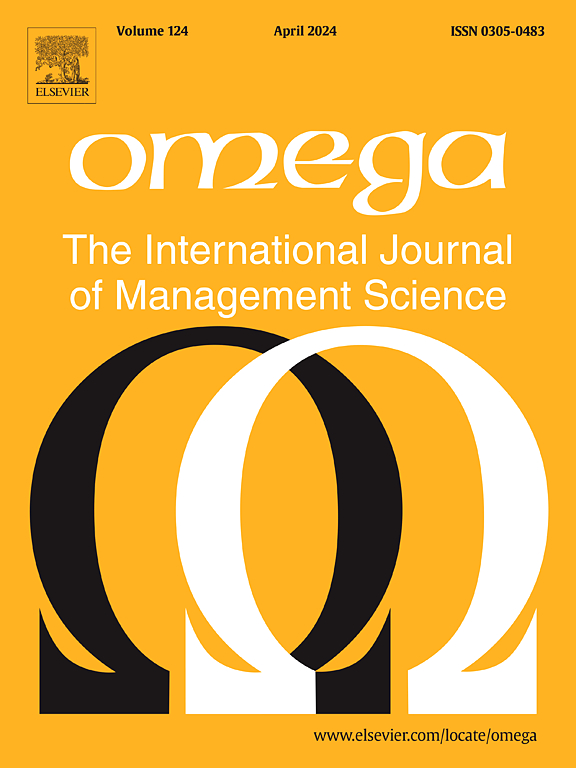Economic and environmental impacts of ecolabeling under different product cost structures
IF 6.7
2区 管理学
Q1 MANAGEMENT
Omega-international Journal of Management Science
Pub Date : 2025-01-22
DOI:10.1016/j.omega.2025.103275
引用次数: 0
Abstract
The environmental quality of a product is often a credence attribute for consumers, remaining unobservable even after purchase and use. To enhance consumer trust, firms can adopt ecolabels initiated by third-party organizations. This paper investigates the impact of ecolabeling on firms, consumers, and the environment in a differentiated market under different product cost structures. Two product types are analyzed based on the costs of quality improvement: marginal cost-intensive products (MIPs) and development-intensive products (DIPs). We find that for MIPs, both firms consistently choose the same certification strategy, whereas for DIPs, asymmetric strategies may occur in equilibrium under certain labeling standards. When both firms adopt certification (i.e., full adoption), ecolabeling can (weakly) reduce firm profits and consumer surplus. However, when only one firm adopts the label (i.e., partial adoption), it generally benefits the certified firm and consumers. Although the introduction of ecolabeling helps to improve the environment, a higher labeling standard does not necessarily translate to better environmental outcomes. Actually, in a highly competitive market with strong consumer environmental awareness, inducing partial adoption with a high standard is more effective than achieving full adoption with a low standard. Additionally, we extend our model to incorporate more general settings, such as cost asymmetry, price competition, consumer heterogeneity, and partial consumer trust in uncertified products, to enhance our managerial insights.
求助全文
约1分钟内获得全文
求助全文
来源期刊

Omega-international Journal of Management Science
管理科学-运筹学与管理科学
CiteScore
13.80
自引率
11.60%
发文量
130
审稿时长
56 days
期刊介绍:
Omega reports on developments in management, including the latest research results and applications. Original contributions and review articles describe the state of the art in specific fields or functions of management, while there are shorter critical assessments of particular management techniques. Other features of the journal are the "Memoranda" section for short communications and "Feedback", a correspondence column. Omega is both stimulating reading and an important source for practising managers, specialists in management services, operational research workers and management scientists, management consultants, academics, students and research personnel throughout the world. The material published is of high quality and relevance, written in a manner which makes it accessible to all of this wide-ranging readership. Preference will be given to papers with implications to the practice of management. Submissions of purely theoretical papers are discouraged. The review of material for publication in the journal reflects this aim.
 求助内容:
求助内容: 应助结果提醒方式:
应助结果提醒方式:


